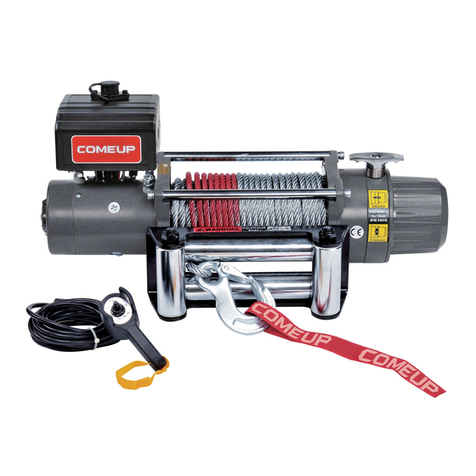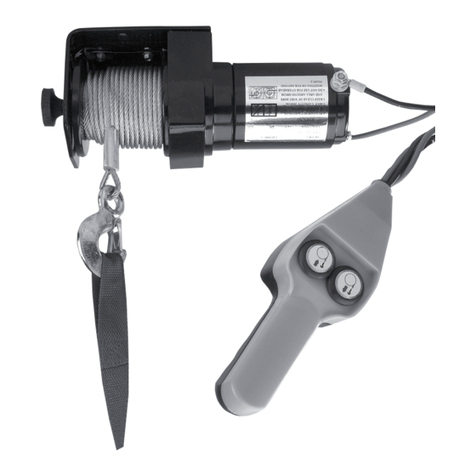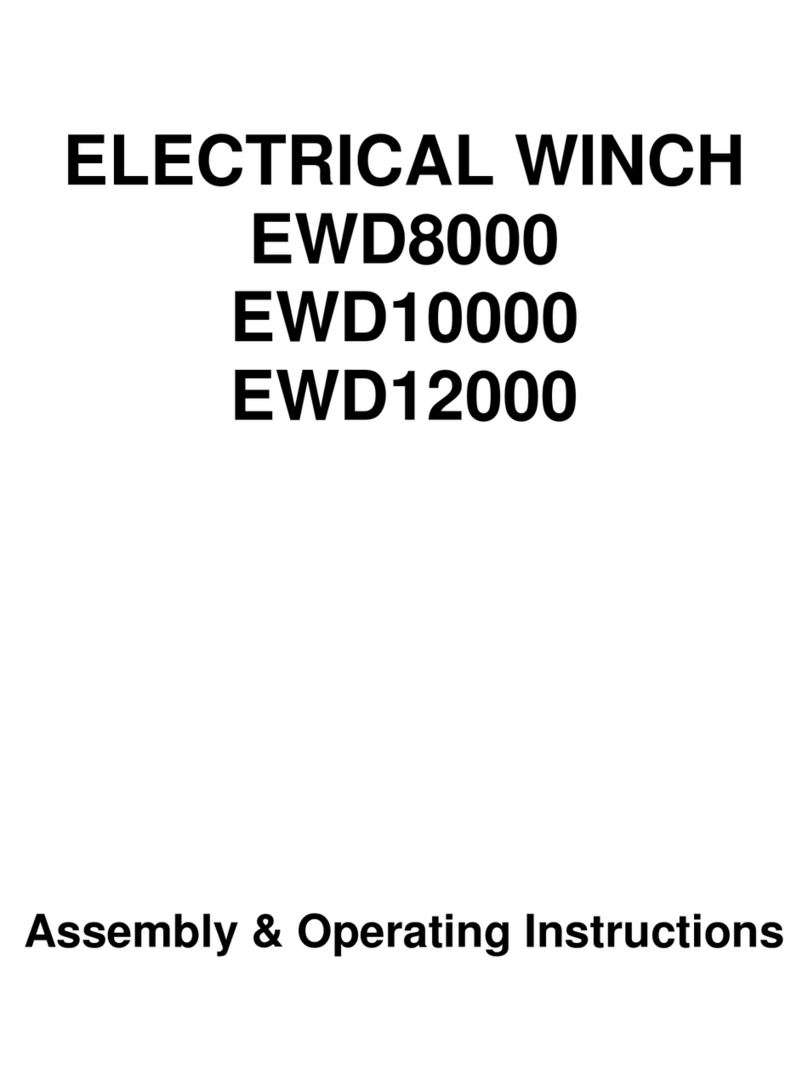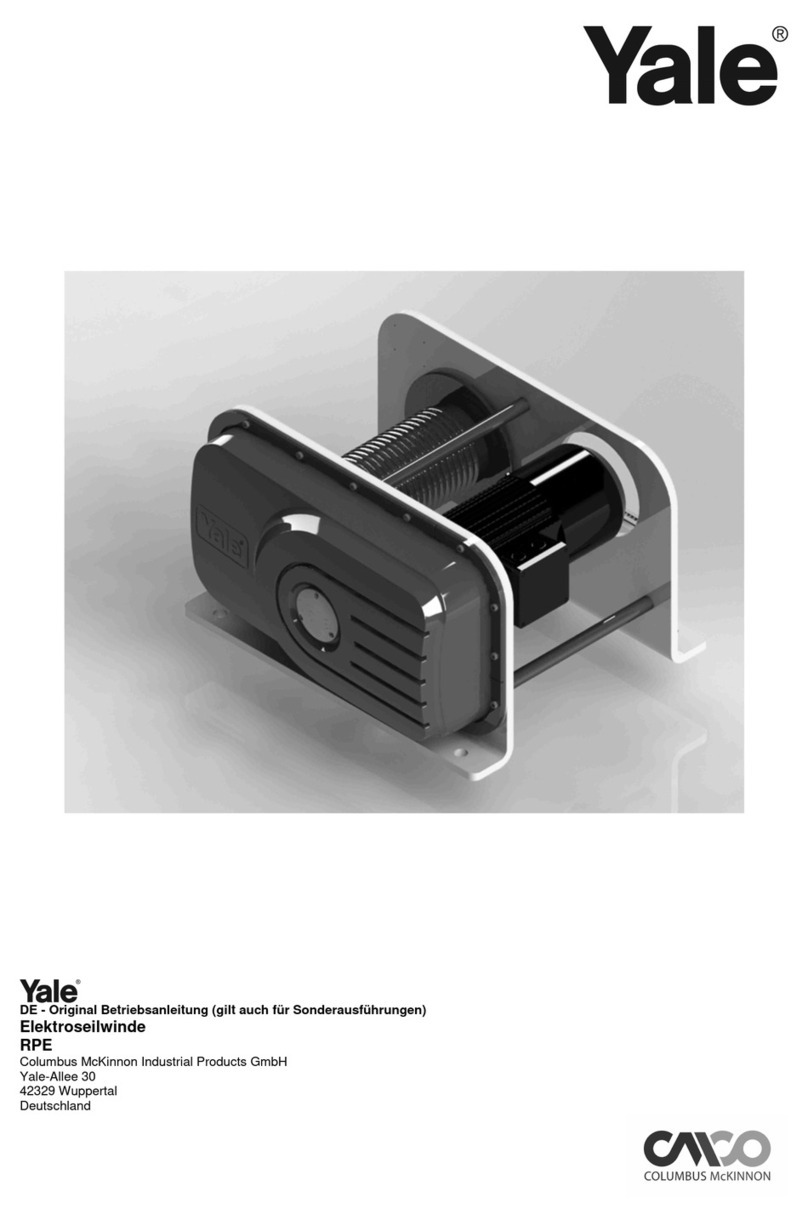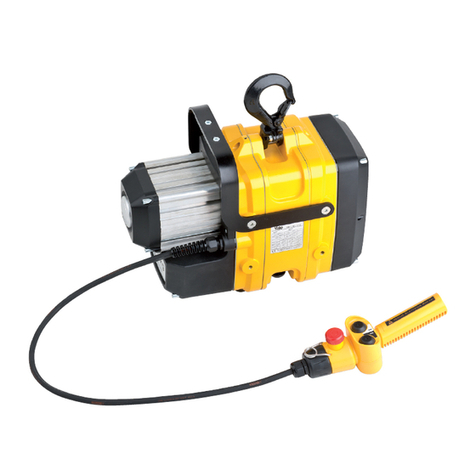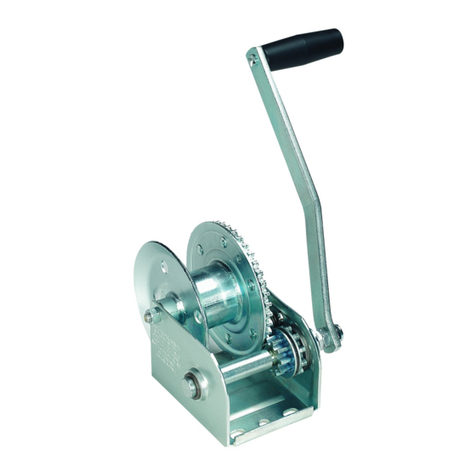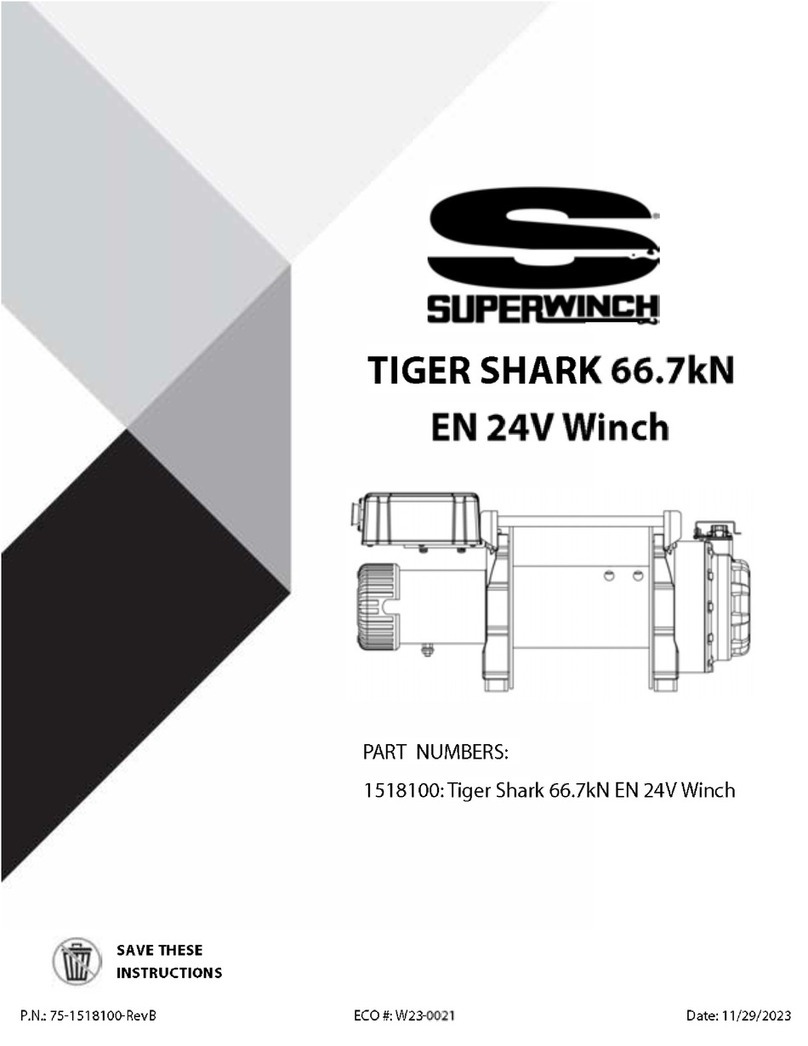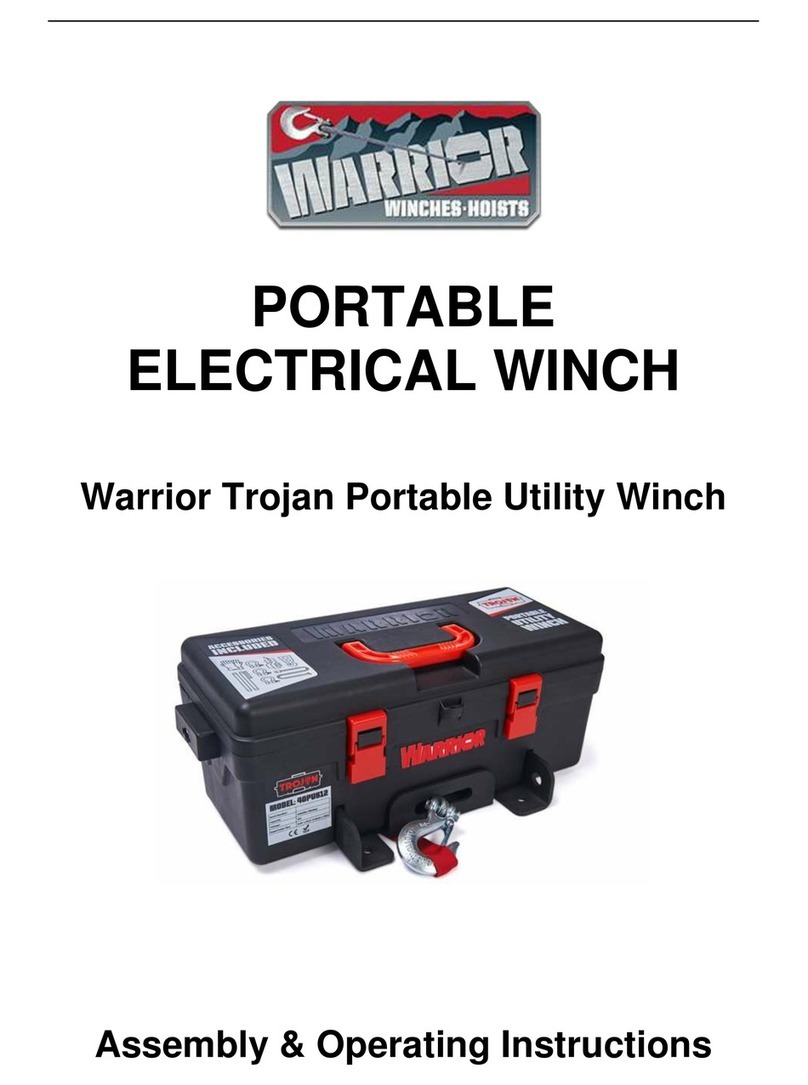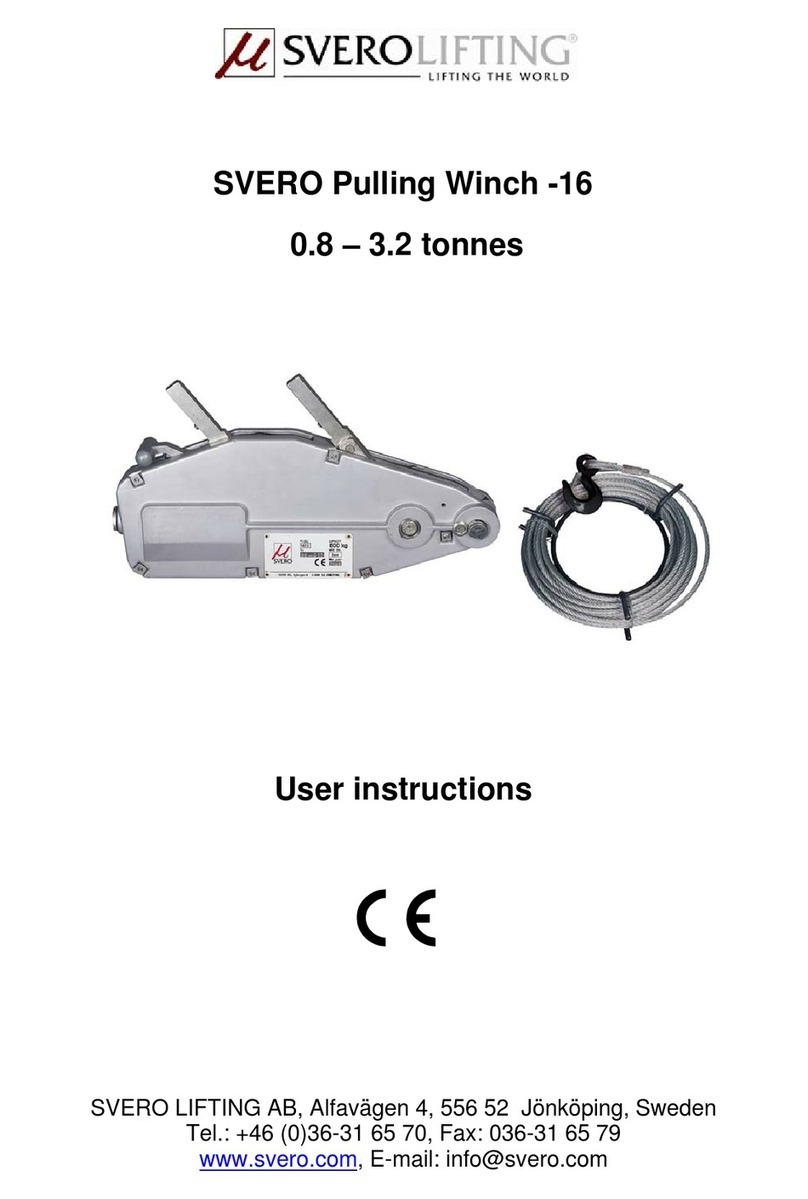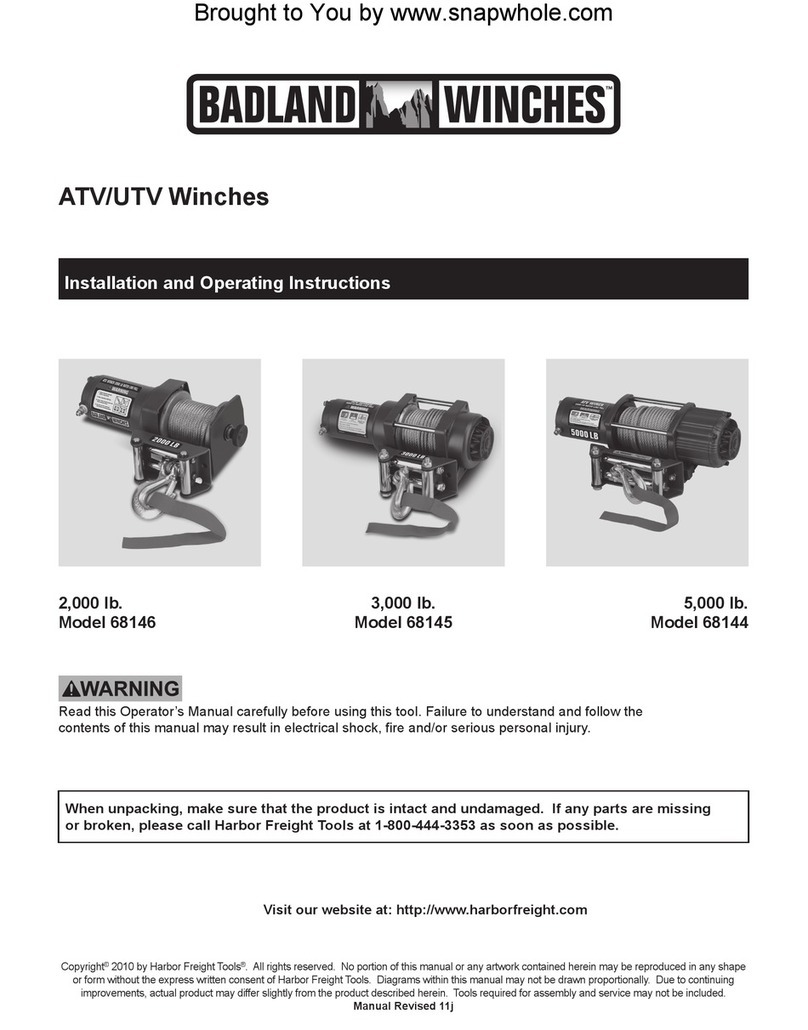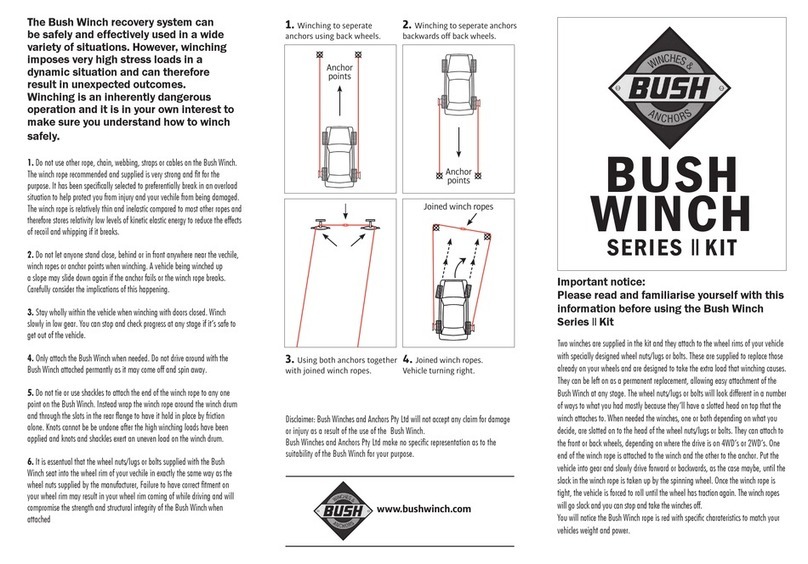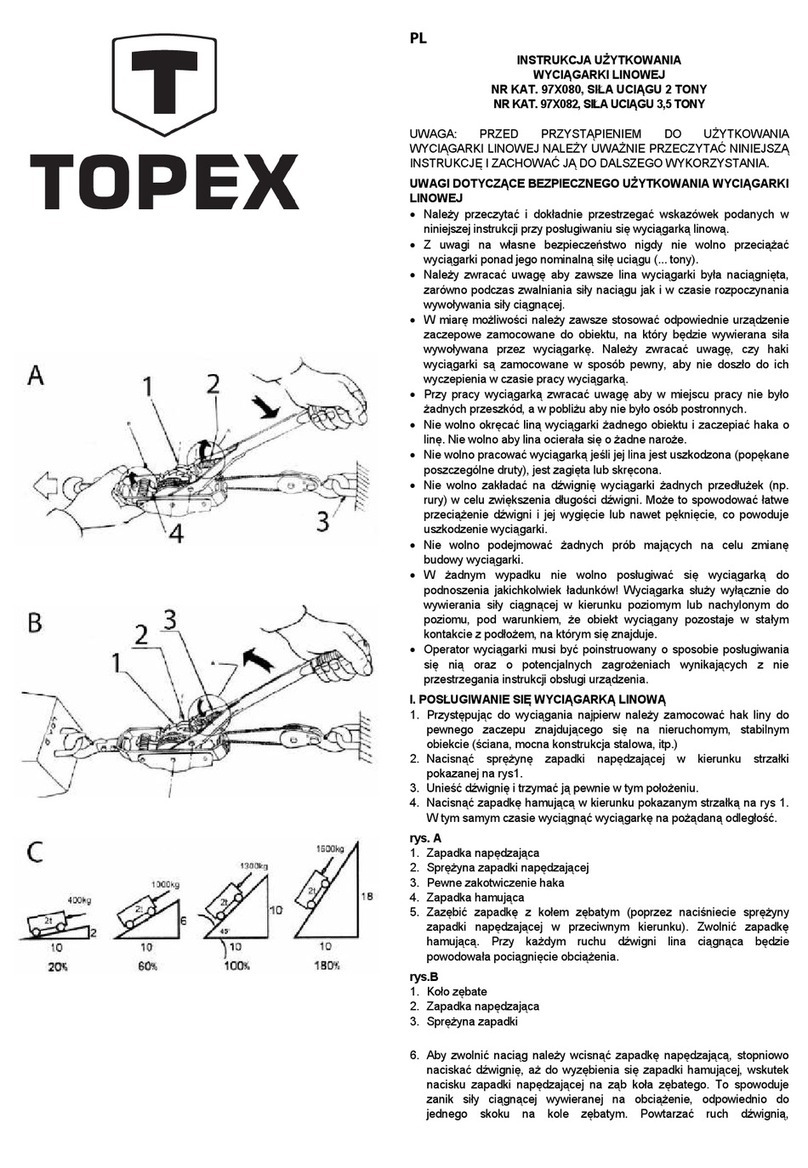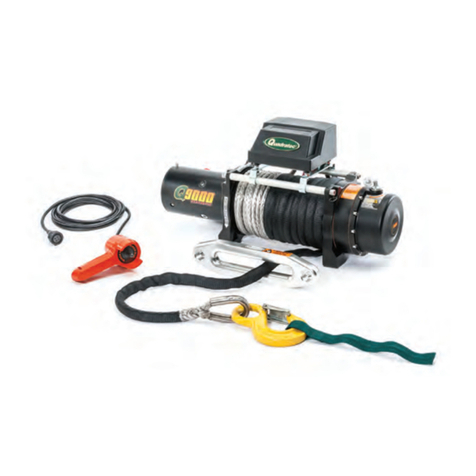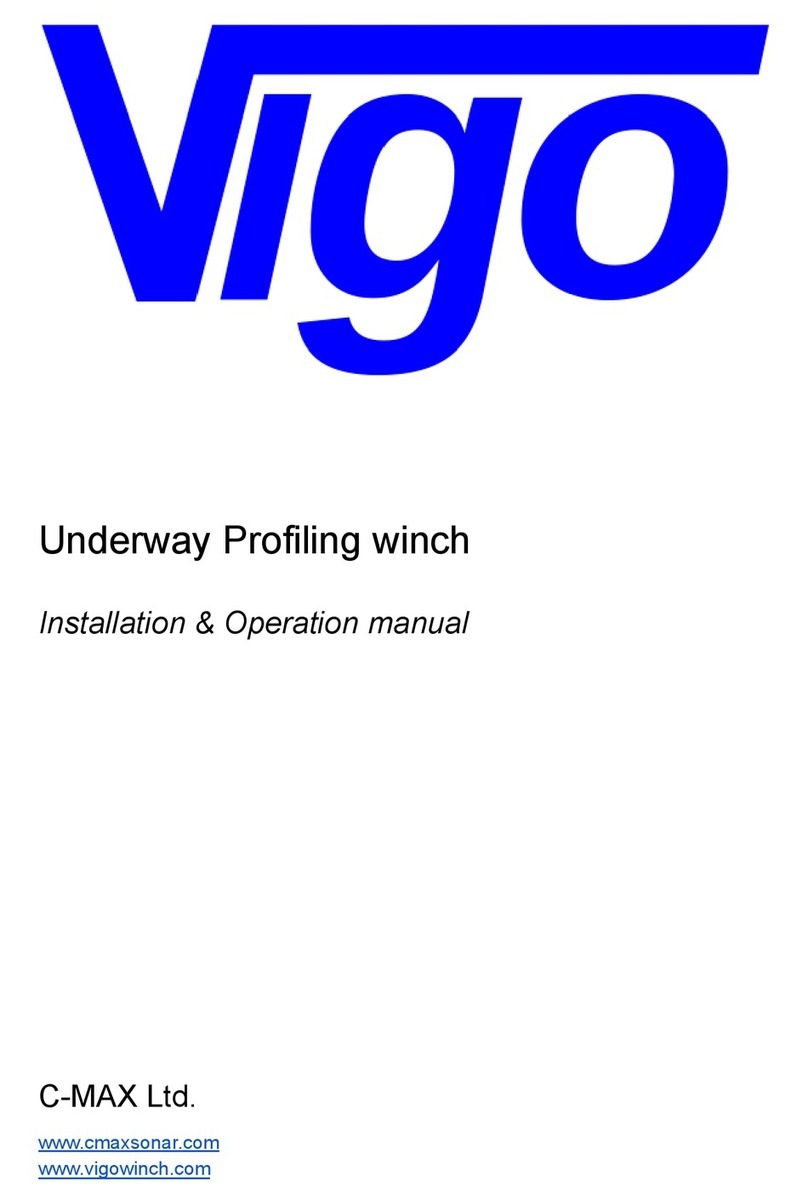
3
English
INTRODUCTION
All users must read these operating
instructions carefully prior to the initial
operation. These instructions are intended to
acquaint the user with the product and enable
him to use it to the full extent of its intended
capabilities. The operating instructions contain
important information on how to handle the
product in a safe, correct and economic way.
Acting in accordance with these instructions
helps to avoid dangers, reduce repair cost and
down time and to increase the reliability and
lifetime of the product. Apart from the
operating instructions and the accident
prevention act valid for the respective country
and area where the product is used, also the
commonly accepted regulations for safe and
professional work must be adhered to.
CORRECT OPERATION
-The hand winch with spur gear is a manual-
ly operated winch fixed to the wall for lifting
and lowering of loads.
-The capacity indicated on the product is the
maximum safe working load (WL L) that may
be attached.
-The device can be operated in ambient
temperatures between -10°C and +50°C.
Consult the manufacturer in case of extreme
working conditions.
Note: At ambient temperatures below 0°C
the brake should be checked for freezing.
-Power operation is not allowed.
-The winch is not designed for continuous
operation.
-Not suitable for use in explosive danger area.
GB
-Not suitable for use in corrosive atmosphere.
-Alterations to the winch or fitting of ac-
cessories are only allowed with our written
approval.
-Pay attention to the technical data and func-
tional description!
INSPECTION PRIOR TO INITIAL
OPERATION
Each unit must be inspected prior to initial
operation by a competent person. The inspec-
tion is visual and functional. This inspection
shall establish that the unit is safe and has
not been damaged by incorrect transport or
storage. Inspections should be made by a re-
presentative of the manufacturer or the supp-
lier although the company can assign its own
suitably trained personnel.
SAFETY INSTRUCTIONS
Operation, installation and maintenance work
should only be executed by personnel who are:
-competent
-trained
-familiar with the relevant regulations
Attention: Do not grease or lubricate the
brake mechanism.
-Moving of people by the winch or of loads
over people is strictly forbidden.
-Never touch moving parts.
-Defects must be repaired immediately by
competent trained personnel.
THE LOAD
-must not be left suspended without supervi-
sion
-must not be allowed to swing
-must not fall into the wire rope
-never move in areas which are not in clear
view. Total lifting area must be totally visible.
THE ROPE
-should only be used for lifting, lowering or
pulling of various loads and must not be used
for any other purpose.
-at least 3 full turns of rope should remain
on the drum when loaded.
-fleet angle (see Picture)
for standard wire rope ≤3°
for special rope ≤1,5°
-when filled to its capacity the drum flanges
must project not less than 1.5 times the di-
ameter of the rope.
-examine and service regularly acc. to DIN
15020 page 2
-only handle with safety gloves
-do not touch the rope inlet
-slowly position the slack rope to the load
-Auf Freigängigkeit der Kurbel achten
(Kurbelfreiraum).
Seileinlauf:
Achtung: Bei falschem Seileinlauf wird die
Bremse unwirksam.
Der Seileinlauf muss entsprechend der Anbrin-
gung der Handwinde erfolgen. Bei einem
Drahtseilabgang nach unten ist die Winde um
180°gedreht einzubauen.
Achtung: Auf richtigen Seileinlauf ist zu
achten!
Befestigung des Seiles:
-Schraube mit Bohrung durch eine der Boh-
rungen in der Seitenplatte schieben (Fig. 6).
-Das Seilende durch die Bohrung in der
Schraube führen.
-Von der Außenseite (Fig. 7) die Mutter auf-
drehen und mit Handkraft anziehen.
Achtung: Bei Seilauswahl auf technische
Daten des Seiles achten!
Seillänge so bemessen, dass in unterster
Laststellung mind. 3 Seilwindungen auf der
Trommel verbleiben.
BEDIENUNGSANLEITUNG
Vor Ingebrauchnahme muss die Winde
zuerst mit 50% der nominellen Last ein-
gelaufen werden.
Die Winde muss mit 50% der nominellen Last
3 mal eine Trommelumdrehung gemacht ha-
ben. Das Fett des Getriebes muss mit einer
Bürste wieder eingebracht werden. Hiernach
kann die Winde in Betrieb genommen werden.
Die Winde muss für eine gute Wirkung der
Lastdruckbremse mit minimal 25 % der no-
minellen Last belastet werden.
SICHERHEITSHINWEIS
Die Winden sind nur für Handbetrieb
geeignet.
-Heben der Last erfolgt durch Drehen der
Kurbel im Uhrzeigersinn.
-Senken der Last durch Drehen der Kurbel
entgegen dem Uhrzeigersinn.
INSPEKTIONS- UND
WARTUNGSANLEITUNG
Sicherheitshinweis
Vor Inspektions- und Wartungsarbeiten (Tab.
2) ist die Winde durch geeignete Maßnahmen
zu entlasten.
Die Lebensdauer der Winde ist begrenzt, ver-
schlissene Teile müssen rechtzeitig erneuert
werden.
SCHMIERSTOFFEMPFEHLUNG
Schmierstoff für Fettschmierstellen:
Mehrzweckschmierfett DIN 51825 T1 K 2 K
Altschmierstoff ist entsprechend den gesetzli-
chen Bestimmungen zu entsorgen!
BETRIEBSSTÖRUNGEN UND IHRE
URSACHEN (siehe Tab. 3)
ENTSORGUNG
Nach Außerbetriebnahme sind die Teile der
Seilwinde entsprechend den gesetzlichen Be-
stimmungen der Wiederverwertung zuzufüh-
ren bzw. zu entsorgen!
